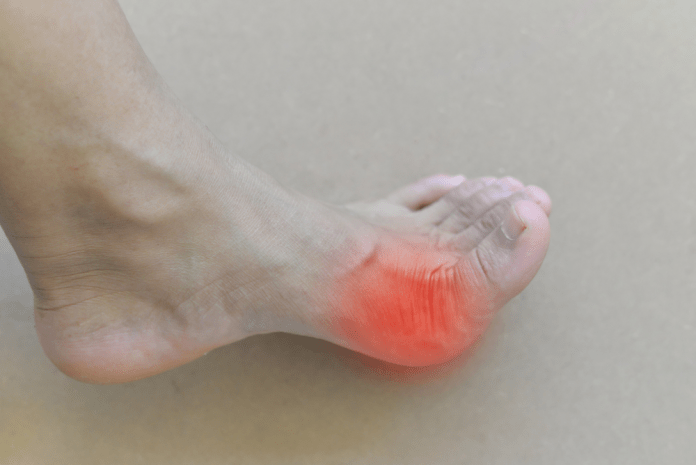
Having a painful big toe joint can make carrying out a lot of everyday physical activities really difficult, from walking, climbing stairs to working out at the gym. According to health authorities, there are a handful of problems that can leave the big toe joint achy, and some of the most common ones can be found below.
Always remember that none of the details mentioned below should be considered as a piece of medical advice. If you want to get to the bottom of things and receive the appropriate treatment for the problem, it’s always a good idea to report your big toe joint pain to your primary health care provider.
Gout
When pain in the big toe joint is mentioned, one thing will surely pop in the minds of many: gout. Basically, gout is caused by the formation of crystals in the joint, more commonly the joint of the big toe. Such can be blamed on the inability of the body to get rid of excess uric acid produced when certain foods are broken down, such as meat, seafood and alcohol.
Signs and symptoms of gout include pain, swelling and redness of the affected big toe joint. It’s also very much possible for what’s referred to as a gout tophus, which is a visible or palpable crystal growth, to form. Eventually, the big toe joint may wind up damaged if gout constantly comes into being.
Bunion
Put simply, a bunion is a bony bump that forms at the base of the big toe. Conservative treatments for it include administration of anti-inflammatory drugs, application of ice, padding, splinting and switching to shoes that provide plenty of space for the toes. If a bunion causes frequent pain or interferes with everyday activities, surgery may be warranted.
To date, health authorities do not really know the exact cause of a bunion. However, they believe that it can be blamed on things such as inherited foot types or deformities, injuries, and putting on tight or high-heeled shoes. Experts add that a bunion can be due to or actually cause arthritis.
Arthritis
Speaking of which, another common cause of pain in the big toe joint is arthritis, in particular osteoarthritis which is regarded as the most common form of arthritis. Osteoarthritis of the big toe joint can be blamed on overuse, injuries and also the normal process of aging — wear and tear of the protective cartilage in the big toe joint can result from them.
Having osteoarthritis of the big toe joint causes signs and symptoms such as swelling, redness, pain, stiffness and sometimes a grinding sensation. Aside from osteoarthritis, other forms of arthritis that may strike the big toe joint include rheumatoid arthritis and psoriatic arthritis.
Turf Toe
Individuals who participate in contact sports are at risk of suffering from a form of big toe joint injury called turf toe. It causes a lot of pain that can stem from a sprain, which is an injury or a trauma to the ligament of the big toe joint. This sports-related injury’s name comes from artificial turf on which the likes of soccer and football are played.
Other than pain, turf toe also causes signs and symptoms such as discoloration and swelling. For immediate relief from turf toe, rest, elevation, ice and sometimes the use of a crutch are recommended to decrease pain. Relieving stress on the affected big toe is necessitated in order to facilitate healing.
Sesamoiditis
Near the big toe joint are two small bones that are situated within a tendon that allows for the flexing down of the big toe, and they are referred to as the sesamoid bones. The sesamoid bones may wind up inflamed and achy as a result of a trauma or an injury, and such is a condition that’s referred to as sesamoiditis.
People who repeatedly engage in jumping or balancing on the toes such as basketball players and ballet dancers are at high risk of ending up with sesamoiditis. Provided that there is no soft tissue tear or fracture involved, sesamoiditis may be alleviated with rest, placing a supportive pad, and using shoes that relieve the ball of the foot of pressure.
Post a Comment